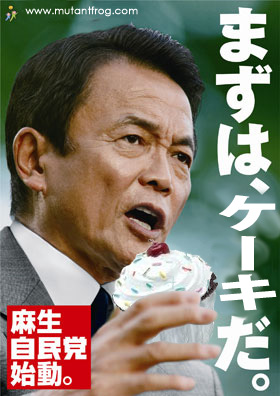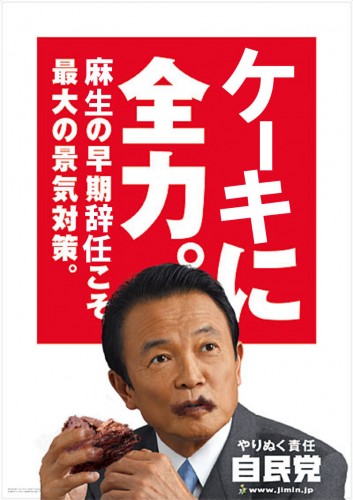[Roy: The following is a short article by my friend Benjamin Boas, which was recently published as the back page “Last Word” column in Tokyo’s free English language paper, Metropolis. Ben and I actually met around 12 years ago when we were both attending Buck’s Rock Summer Camp and then after a decade of no contact, both happened to be studying at Kyoto University at the same time last year. Ben spent one year at Kyoto University on a Fulbright grant, which he used to conduct field work researching the anthropology of Japanese gambling, particularly the social role of mahjong in Japanese office culture.
He has a sporadically updated blog on his mahjong studies, found here.]
• • • • • • • • • • • • • • • • • •
During last year’s All Japan Poker Championship, one of the finalists made a play that seemed strange. Despite only having an unmatched ace, he called an all-in bet by his opponent at the flop, caught nothing on the turn and river, and lost to his opponent’s pair of tens. Since he could have folded his hand and taken a small loss instead of losing the whole championship, making that call was at best very risky and at worst a terrible play. I mentioned this to some of the expert players at the tournament, and they agreed, but one Japanese spectator had a different opinion.
“Did you see that last hand?” he said. “You didn’t know who would win until the end. It was so exciting!”
When I pointed out that that the chances of the losing player winning that hand were very low he was unmoved.
“But you don’t know what card is going to come next!” he maintained. “He could have gotten the ace.”
Assuming my Japanese had been misunderstood, I got my friend, a former champion, to explain that although there was a chance of this happening, it wasn’t high enough to justify not folding. This, too, fell on deaf ears. It was more than just not understanding how poker worked; the guy didn’t seem to understand that there’s a difference between luck and probability.
In my years studying the Japanese gambling world, I’ve run into this a type of thinking quite often, and sometimes I wonder why.
Now, myopic reasoning is definitely not limited to Japanese people. No one besides card counters, poker sharks and casino owners comes away from Las Vegas ahead in the long run, but that doesn’t stop millions of people of every nationality from trying. What makes Japan different from America, however, is that gambling parlors aren’t limited to a couple of cities and Indian reservations; they stand on nearly every street corner of Tokyo and dot practically the entire countryside.
I am speaking, of course, about pachinko parlors, which account for roughly 4 percent of Japan’s GNP and are patronized by nearly a quarter of the population. Although commonly described as “Japanese pinball” and legally defined as something close to an arcade game, pachinko is machine-operated gambling and nothing more. Thanks to the advent of automated shooting and computer controlled payouts, after a player sits down at the machine, skill is practically nonexistent. Despite the fancy CG and byzantine prize-redeeming system, pachinko is probably best described as a slot machine in a kimono.
And that’s not the worst of it. If you factor in all other forms of gambling and take into account differences in population size, Japanese and Americans spend roughly the same amount on gambling-but Japanese people lose twice as much money. What accounts for this difference?
Part of the answer may be found in another Japanese gambling game, mahjong. Although Chinese in origin, mahjong was introduced here over 100 years ago and is currently one of the country’s most popular board games. Several manga dealing with mahjong are released every month, and the stories, written by pros, often touch on the subject of luck. Some of these writers’ ideas about how probability works are pretty suspect, particularly when they recommend “analog” methods over “digital” approaches.
Analog players try to play in accordance to their luck. If they feel lucky, they make risky plays and shoot for big hands; if not, they give up on hands regardless of how promising they may look. Digital players, on the other hand, make plays which are statistically likely to favor them.
Think about that. If this debate were brought to the attention of skilled poker players, it would get laughed out of the room. Yet I have interviewed very senior mahjong pros who insist that the young ‘uns who play only according to the numbers are “idiots.” “If you can successfully take your opponent’s luck,” they say, “you can win in any situation.” Just like with the spectator at the poker tournament, no explanation will get through to them until they recognize the significance behind probability math.
So, in the end, I had to agree that yes, the losing player was very unlucky and yes, poker is interesting because you don’t know who is going to win. What I will always remember about that conversation was seeing the expression on my friend’s face as we gave up. It was the same face I see Japanese people put on when they just can’t get a foreigner to understand the way things work in Japan.

 And finally, regular poster Jade OC tried his own variant on the cake theme, which I think came out very well. This cake is no lie.
And finally, regular poster Jade OC tried his own variant on the cake theme, which I think came out very well. This cake is no lie. Come on people. Aso’s approval rating is working on a new record low and the LDP is on the slow train to dumpsville. The least you can do is help out with a new campaign poster. Send it in at an attachment or post a link and it’ll be added to the collection.
Come on people. Aso’s approval rating is working on a new record low and the LDP is on the slow train to dumpsville. The least you can do is help out with a new campaign poster. Send it in at an attachment or post a link and it’ll be added to the collection. 


